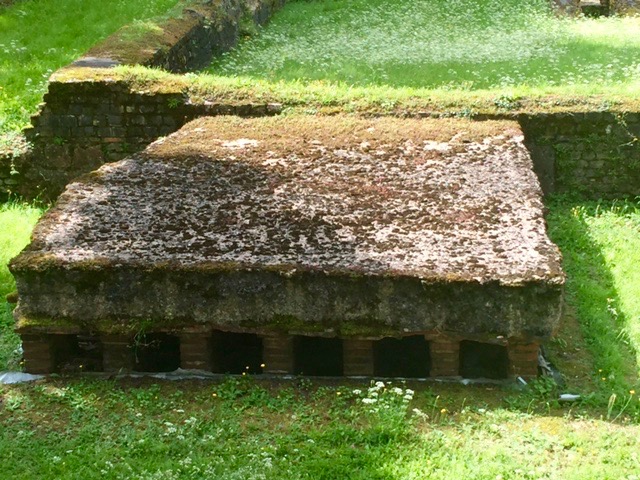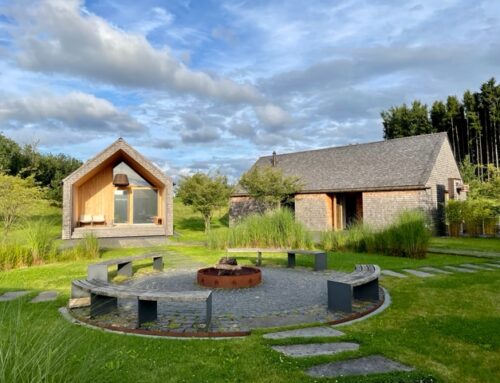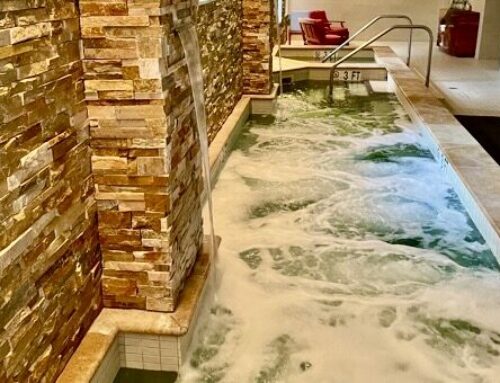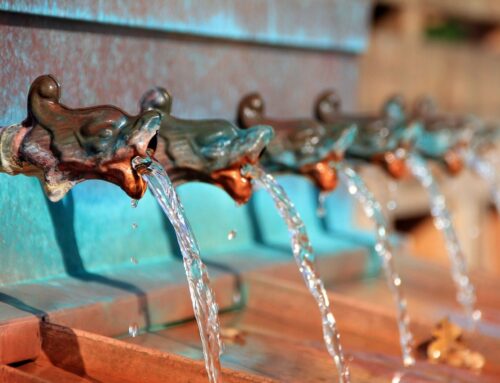Bathing History II: Spa History at Barbara Baths
In order to understand our contemporary spa culture, I find it important to dig deep into spa history.
Part I of this mini series Bathing History: The Romans starts with an introduction to bathing, healing and cleansing rituals from all over the world, that have been known for hundreds or thousands of years.
Since I was brought up in Germany that until today holds evidence of a rich Roman culture some 2000 years old, Roman bathing history is of particular interest to me.
Recently I had a chance to spot spa history at the largest Roman bath complex north of the Alps. The monumental bath called Barbara Bath is located close to the river Mosel in the city of Trier.
About the City of Trier, the centre of antiquity
Trier on the banks of the river Mosel in the German state of Rhineland-Palatine was one the largest urban centres in the Roman Empire.
Today about 100.000 inhabitants live in Trier, that lies in a valley between low vine-covered hills of red sandstone near the border with Luxembourg and within the important Mosel wine region. It is said to be the oldest city in Germany. Trier was founded by the Celts in the late 4th century BC and later conquered by the Romans in the 1st century BC.
A legend tells the tale of the city being founded by an Assyrian prince, which puts the city’s founding time even long before ancient Rome.
Trier’s incredible sights
Trier is known for its well-preserved Roman and medieval buildings, which include:
- the Porta Nigra, a well preserved Roman city gate
- ruins of the Trier Imperial Baths
- the Constantine Basilica, which used to be the 67m long throne hall of Roman emperor Constantine
- the Trier Cathedral dating back to Roman times
- an amphitheater
- an ancient Roman bridge crossing the Moselle river, the oldest bridge north of the Alps still in use,
and is always worth a visit.
The Barbara Baths – Spa History
The Barbara Baths (German Barbarathermen) are a set of ruins of a massive second century Roman public baths complex.
Some parts of this complex have been restored and can be seen today. Unfortunately most of the Barbara Bath complex was quarried for materials in the seventeenth century.
Originally, the Barbara Baths that were constructed in the 2nd century AD, must have been some impressive 172 x 240 m in size. Which made them the second largest baths at the time. The info board reads: The bathing room with the cold water bath were …”once an imposing room with sumptuous marble cladding on its wall. Four strong columns with magnificent capitals supported its arch.”
Today an elevated walkway across the area with nine information panels provides great views and info on the set of tunnels, the furnaces, sewers, heating system, pools and more.
Pictures of reconstructions explain the architecture and furnishings, which puts the visitor right in a time machine. This makes it easy to understand the procedures and protocols of an ancient Roman bathing culture.
My visit to the Barbara Baths – a UNESCO World Heritage site
I consider myself quite knowledgable when it comes to spa history, thus I was pretty impressed by the information provided:
- pictures of reconstructions
- use of Latin terminology
- explanations to the use of the facilities
- mention historical events
- dedicated kids sections with information for children
A sophisticated Heating System
Many of the rooms at the Barbara Baths were heated by a sophisticated underfloor heating system. The floor would actually sit on pillars, leaving a space in which heated air would be spread. Through hollow tiles in the floor the air would also rise up into the room above, this way heating the room evenly.
The Pools
The pools must have been rather special: not one, but two swimming pools were available to the spa-goers. Likely due to the climate North of the Alps, both pool were indoor and their water heated, unlike the large pools of Roman baths South of the Alps, that were usually outdoor. It is said, that a total of 1250m2 of water was required for the daily supply. The water was preheated in massive tanks and directed into the pools through pipes. Waste water was led into the river Moselle, one explanation for the location of the baths. One of the pools at the Barbara Baths is said to have been 11 x 20 meters, with a depths of about 1.30 m.
Spa History: The Bathing Process in a Roman Bath
A common bathing process would go from the ‘caldarium’ via the lukewarm ‘tepidarium’ (a so called heat trap) to the unheated ‘frigidarium’ (refreshing in cold water). These three large areas usually make the core of a Roman bath. They would have been richly decorated with marble wainscoting and sculptures.
A large courtyard was located to the North, used as exercise area and social meeting point.
Visitors to one of the large public Roman baths would typically also find food vendors, libraries, massage therapists and many other services.
Bathing played a major part in ancient Roman society and used to be one of the most common daily and communal activities. It was practised by many across all social levels. People would meet at the baths for relaxation, physical activities, but also meeting others, chatting, taking refreshments, exchanging ideas, and even seal a business deal.
Some modern societies however regard bathing a rather individual activity, performed in the privacy of a home. In ancient Rome, only the wealthy could afford private bathing facilities at home. Yet they would – like everybody else -patronise the communal baths such as the Barbara Baths on a regular basis.
Not that much different from our modern-day spas really. What do you think?
all pictures taken at Barbara Therme Trier















